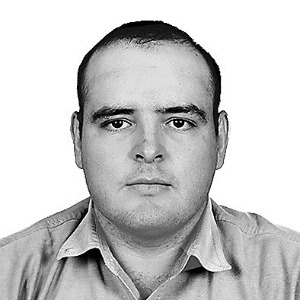Dave White, Climate Change Truth Inc, United States
In this research manuscript, the authors seek to answer four essential questions relative to the current climate change conversation now underway globally: (Q1) What is the numerically defined goal for annual Net Zero Carbon Dioxide Emissions in gigatonnes essential for global at [....] » Read More











































Title : Suitaiology: Technical goals and general concept designing for applications in mountain areas
Dachang Zhang, National Research Center for Geoanalysis and Water & Eco Crisis Foundation, United States
Water is the source of life, but driven by natural forces, its natural characteristics manifest as a process of "planation" that reshapes the terrain. Therefore, the humanistic pursuit based on existing patterns inevitably leads to conflict with this process. As a compl [....] » Read More
Title : Farm safety day camp programming for youth
Jason A Hedrick, The Ohio State University, United States
In response to the youth agricultural related injury statistics and public concern, The Ohio State University has coordinated annual Farm Safety Day Camps for 3rd grade students, reaching over 13,000 youth since its inception. The goal of the day camp is to bring farm safety issu [....] » Read More
Title : Understanding the perception of millet consumption in Nigeria: A structural equation model approach
Ademiku Adeleye, University of Edinburgh, United Kingdom
Millet, a staple food with significant nutritional and environmental benefits, has experienced a decline in consumption in Nigeria due to various socio-economic and cultural barriers. This study employs Structural Equation Modelling (SEM) to investigate the factors influencing mi [....] » Read More
Title : Plant-microbe synergies in mitigating nitrous oxide emissions from grazed pastures
Roselyne Aleyo, Massey University and Agresearch Grasslands Campus, New Zealand
Nitrous oxide (N2O) emissions from grazed pastures contribute significantly to global greenhouse gas emissions, primarily from urine and dung deposited on the land (~50-70%). Despite years of soil-focused research, the role of plant traits in influencing N2O cycling remains large [....] » Read More
Title : Sub-surface heating of farmland to promote early harvest and increase productivity in northern Sweden
Jenny Lindblom, Lulea University of Technology, Sweden
During the last decades, farmers in the North of Sweden have been struggling with declining profits of their produce forcing many family farms into liquidation or closing. As a result, the farmed land area in the North has been shrinking continuously with about 1% each year since [....] » Read More
Title : The future of modern agriculture: IoT, AI and block chain technology for sustainable farming and agribusiness
Loucas Protopappas, Agricultural University of Athens, Greece
The need for new e-Government services in the European Union has been clear since the late 20th century. The EU aims to foster reliable and advanced e-Government systems that work on local, national, and international levels. Member states are encouraged to update and modernize e [....] » Read More
Title : Beyond the frontrunners: Understanding adoption of digital agricultural technologies
Caroline Van Der Weerdt, TNO, Netherlands
Despite the potential of digital agricultural technology solutions (DATSs) to increase farm viability, sustainability and farmer wellbeing, only a minority of frontrunners seems to structurally embed these on the farm. Average European adoption figures point to a rate of around 6 [....] » Read More
Title : A new direction in the use of wheat in agricultural processing
Elzbieta Wojtowicz, Institute of Agricultural and Food Biotechnology - State Research Institute, Poland
Wheat is a valuable ingredient in many food products, and wheat harvest surpluses can be used to create new solutions for the agricultural industry. Due to the fact that the amino acid profile of cereals is not fully valuable for animal feeding, the most common way to improve the [....] » Read More
Title : Characteristics of new solid and liquid feed products based on wheat and pea
Joanna Le Thanh Blicharz, Institute of Agricultural and Food Biotechnology - State Research Institute, Poland
Wheat grain constitutes a vital source of plant-based nutrition for humans. Wheat is valuable ingredient in many food products, and wheat harvest surpluses offer opportunities for innovative solutions within the agricultural industry. Due to the fact that the amino acid profile o [....] » Read More
Title : Beyond high-tech: Finding the right solutions for sustainable vertical farming in Singapore
Chow Kheong Keat Gregory, Ngee Ann Polytechnic, Singapore
Singapore faces a pressing challenge in securing its food supply amidst rapid urbanization, climate change, and land scarcity. Historically reliant on food imports—constituting 90% of its consumption—the nation has aggressively pursued urban agriculture and vertical f [....] » Read More
Title : Use of artificial intelligence in Brazilian agribusiness: Challenges and opportunities
Luisa Paseto, CPA IARA USP, Brazil
Artificial Intelligence (AI) has been employed to analyze vast volumes of data related to climate, soil, and agricultural practices, enabling producers to make more informed decisions. Predictive modeling tools present opportunities and have assisted in determining the optimal ti [....] » Read More
Title : Soil physical property assessment of large-scale paddy fields using autonomous robots
Munehiro Ebato, Institute for Agro-Environmental Sciences, Japan
In recent years, due to the effects of climate change, intense rainfall exceeding 50 mm per hour has become more increasing. Large-scale flooding caused by linear rainbands and massive typhoons occurs almost every year somewhere in Japan. Agricultural fields are also suffering si [....] » Read More
Title : Strategies for water savings and agricultural enhancements in arid regions
Khalil Ur Rahman, Ruler of Dubai Agriculture innovations Wing, United Arab Emirates
Arid and semiarid regions account for almost 40-45% of the Earth’s total land surface, and these areas are highly prone to salinization due to low rainfall and improper water management practices. Salinity and drought, two very closely associated abiotic stressors, negative [....] » Read More
Title : Photochemical analysis on wild vine (Vitis vinifera ssp. Silvestris) grape genotypes
Dilek Karatas, Dicle University, Turkey
This research, was conducted to determine the phytochemical properties of 8 wild vine genotypes (E1, K1, L7, M1, M2, M5, M6, P1) in the protected wild vine (Vitis vinifera ssp. silvestris) parcel in the viticulture research and application area of Dicle University Faculty of Agri [....] » Read More
Title : Weed management in husk tomato (Physalis ixocarpa Brot. Ex Horm.) in Penjamo, Guanajuato. I. Diagnosis of weeds and their effect on performance
Jose Francisco Santiaguillo Hernandez, University of Chapingo, Mexico
The husk tomato or green tomato is a solanaceous plant native to Mexico, considered one of the main vegetables in the mexican territory. Its production is affected by pests, diseases and weeds, which reduce fruit yield and production quality. The experiment was conducted in a com [....] » Read More
Title : Effect of VIUSID agro in promoting growth in crops of the Cuban coffee agroecosystem
Carlos Alberto Bustamante Gonzalez, Instituto de Investigaciones Agro-Forestales, Cuba
The use of VIUSID Agro® was studied in the production of coffee, cocoa, forestry and fruit trees present in the coffee agroecosystem of the mountains of Cuba. The effect of concentrations of the biostimulant, the time of application and the varietal response of Coffea a [....] » Read More
Title : Harnessing the potential of wild edibles for sustainable agriculture, livelihood and food security
Tara Devi Sen, Sardar Patel University, India
Wild edible plants, long recognized by indigenous communities for their nutritional and medicinal value, offer untapped potential to enhance food security and promote sustainable agriculture. In the face of climate change, biodiversity loss, and declining soil fertility, these re [....] » Read More
Title : Coffee leaf disease identification and severity estimation through deep learning methods
Carla Kristine Silva, Department of Agriculture, Philippines
This study addresses the challenges faced by the global coffee industry due to the increasing prevalence of coffee plant diseases, which affect the quality and quantity of coffee yield. This research introduces an approach integrating computer vision technology with deep learning [....] » Read More
Title : Survey and abundance of major insect pests on pomegranate fruits in Egypt
Mohamad Abdelatief Abdallah Abazaid, Plant Protection Research Institute, Egypt
The present study was carried out to survey and evaluate the abundance of common pomegranate insect pests during 2016 and 2017 in Egypt. A total of 8 major pests belonging to 4 insect orders, 24 secondary pest species belonging to 6 orders and 23 minor pests belonging to 4 orders [....] » Read More
Title : Innovative solutions for conserving water, increasing productivity, and enhancing quality in agriculture
Wessam Essam Elssawy, Agricultural Engineering Research Institute, Egypt
The Mediterranean and North Africa are among the regions most vulnerable to the impacts of climate change. This crisis is becoming more pronounced as summer precipitation dwindles and temperatures rise. Additionally, extreme drops in winter temperatures negatively affect many cro [....] » Read More
Title : Enhancing crop yields: Integrating modern techniques in horticulture
Muhammad Farooq, Agriculture Research institute Tarnab, Pakistan
This show investigates creative plant rehearses and maintainable cultivating techniques intended to upgrade crop efficiency while advancing ecological wellbeing. As worldwide interest for food increments, conventional cultivating rehearses face difficulties, for example, soil cor [....] » Read More
Title : Ineffective Agricultural Advisors (AAs) support on climate information and adaptation strategies dissemination in Ugu district, KwaZulu-Natal
Zoleka Ncoyini Manciya, University of KwaZulu Natal, South Africa
There is growing concern that climate change will worsen poverty and food insecurity, particularly in developing countries, hindering the achievement of Sustainable Development Goals (SDG) 1 (No Poverty) and 2 (Zero Hunger). Rural populations are expected to be severely impacted, [....] » Read More
Title : Innovative solutions for sustainable food systems and human well-being
Andrew Kamara, Bukadde Magezi Farmers Association, South Africa
The Global Conference on Agriculture and Horticulture provides a vital platform for experts to convene, share knowledge, and address the complex challenges facing the world's food systems. Aligned with the conference's mission to promote sustainable agriculture and hortic [....] » Read More
Title : Banana weevil (Cosmopolites sordidus) devastating banana production in Kenya
Ngugi Ceciliah Njoki, Kenya Agricultural and Livestock Research Organisation, Kenya
Horticulture is the leading agricultural sub-sector, in Kenya, with fruits accounting for 32% of the sector. Banana fruit is a major horticultural crop accounting for 17.8% and 34.5 of domestic horticulture's total value and all fruits respectively. The crop bears fruit all y [....] » Read More
Title : Meta-analysis of biochar effects on plant yield and soil nutrient dynamics across agroecological systems
Marija Sigurnjak Bures, Inovation and Development Ltd, Croatia (Hrvatska)
Biochar is a carbon-rich, porous, and alkaline material produced through the pyrolysis of organic biomass. Due to its unique physicochemical properties, biochar has emerged as a promising soil amendment with the potential to enhance soil fertility, sequester carbon, and support s [....] » Read More
Title : Early assessment of nutrient deficiency in fruit crops using Unpiloted Aerial System (UAS) imagery
Susmita Lamichhane, University of Connecticut, United States
Nutrient deficiency in fruit crops such as apples, peaches, blueberries and grapes significantly impact yield and quality, needing timely and accurate detection methods. Typically, nutrient management in fruits is done through visual inspection of plants, plant tissue sampling an [....] » Read More
Title : CO2 levels, technical breakage and quality of maize grains stored under different conditions
Osvaldo Resende, Instituto Federal de Educacao, Brazil
The use of CO2 sensors has been reported as an e?ective tool in the early detection of signs of deterioration, allowing good accuracy in decision-making about the quality of stored grains. The objective of this study was to quantify the CO2 levels produced by maize grains stored [....] » Read More
Title : Planning of wind protection belts in the function of protecting agricultural land from aeolian erosion in lowland areas
Ljubisa Bezbradica, Institute of Architecture and Urban & Spatial Planning of Serbia, Serbia
The negative effect of wind on agricultural land is reflected in the mechanical impact on the soil, which destroys and carries away soil particles. In addition to the removal of the fertile layer of the soil, there is also the burying of agricultural crops with the material carri [....] » Read More
Title : Applications of advanced biotechnology and artificial intelligence and remote sensing technologies in enhancing food security and sustainable natural resource management
Sameh Abuo El Kasem, Agricultural Genetic Engineering Research Institute, Egypt
The world is currently witnessing significant advancements in biotechnology, artificial intelligence (AI), and remote sensing technologies, all of which play a crucial role in enhancing food security and ensuring sustainable management of natural resources. These technologies ser [....] » Read More
Title : Propagation of plantain (Musa aab) in a thermal chamber and in the open field using two biostimulants in the Arajuno canton, Pastaza province, Ecuadorian amazon
Jorge Antonio Freile Almeida, Amazonian State University, Ecuador
Plantain cultivation occupies a fundamental place in the agricultural economy and is one of the main products of the basic basket of the Ecuadorian Amazon region, however the proliferation of pests and diseases is a reality that producers face by not having quality seedlings to e [....] » Read More
Title : Effect of worm castings on the vegetative development and agricultural yield of Solanum lycopersicum var. airton under seedbed and field conditions in the Sucúa Canton, Morona Santiago Province, Ecuadorian Amazon
Yoel Rodriguez Guerra, Amazon State University, Ecuador
The Amazon region, Ecuador's most biodiverse region, plays a key role in the country's ecological balance. However, sustainable horticultural production faces limitations such as low soil fertility, high humidity, pests, lack of infrastructure, and restricted access to or [....] » Read More
Title : Sustainability assessment of production systems in two communities of Pastaza canton, Ecuadorian amazon
Reinaldo Demesio Aleman Perez, Amazonian State University, Ecuador
Sustainability is a critical factor in production systems due to its role in environmental conservation. The Amazon region, one of Ecuador's most biodiverse areas, harbors approximately 8% of the world’s species and possesses vast natural resources that require sustaina [....] » Read More
Title : Phytosanitary challenges in Amazonian agroecology: Incidence and severity of insect pests in strategic crops in the Amazonas community, Madre Tierra Parish, Pastaza Canton
Segundo Benedicto Valle Ramirez, Amazonian State University, Ecuador
Despite advances in agricultural production, farmers today face significant challenges. On the one hand, consumers are increasingly demanding, demanding high-quality products free of pesticide residues and with a long shelf life. On the other hand, insecticides are becoming less [....] » Read More
Title : Unpacking food insecurity in Somalia: Structural, institutional, and environmental barriers to sustainable agricultural development
Shuaib Nour, South West State Somalia, Somalia
Food security is a significant concern across Africa, particularly in Somalia, which endures severe limitations owing to ongoing violence, environmental degradation, and institutional deficiencies. This research analyzes the fundamental causes compromising food security in Somali [....] » Read More